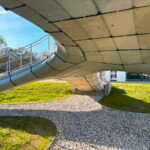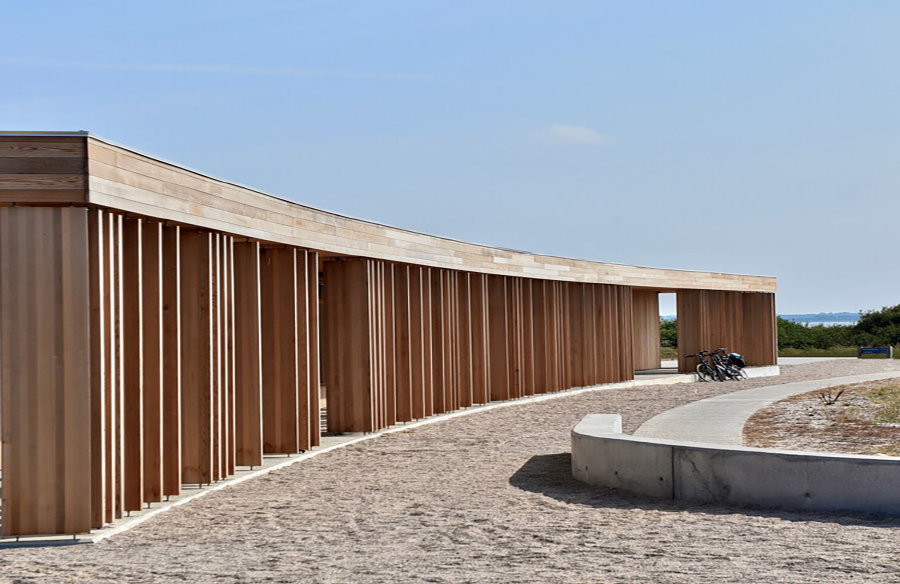The Phoenix Bridge, situated in Lyon, France, marks a significant leap forward in sustainable urban infrastructure. Designed by Zaha Hadid Architects, this pedestrian bridge represents the evolution of the pioneering Striatus bridge, first showcased at the 2021 Venice Architecture Biennale.

Building on Innovation: The Phoenix’s Journey
Building upon the innovations of its predecessor, the Phoenix Bridge is constructed from 10 tons of recycled materials, including aggregates sourced from the original blocks of the Striatus bridge. Leveraging Holcim’s ECOCycle® circular technology, a proprietary concrete ink was developed, resulting in a formulation with a 40% lower CO2 footprint compared to the 2021 Striatus bridge. Overall, the carbon footprint of the Phoenix Bridge is reduced by 25% compared to its predecessor.
Circular Construction: Redefining Efficiency and Sustainability
Circular construction principles, coupled with computational design and 3D printing technologies, enable the Phoenix Bridge to achieve up to a 50% reduction in material usage without compromising performance. Remarkably, the bridge stands solely through compression, eliminating the need for reinforcement. Its modular blocks are designed for easy disassembly and recycling, embodying the essence of circularity.

Collaborative Innovation: A Multidisciplinary Endeavor
The realization of the Phoenix Bridge is the result of a collaborative effort between Holcim, the Block Research Group at ETH Zurich, Zaha Hadid Architects Computation and Design Group (ZHA CODE), and incremental3D. Constructed at Holcim’s Innovation Hub in Lyon, this project exemplifies the fusion of cutting-edge design, advanced materials, and sustainable construction practices.
Towards a Greener Future: The Impact of the Phoenix Bridge
The Phoenix Bridge serves as a testament to the potential of circular construction and 3D concrete printing in significantly reducing carbon emissions in the built environment. By showcasing the viability of low-carbon structural solutions, this project paves the way for a greener, more sustainable future, aligning with global efforts to combat climate change and promote environmental stewardship.












